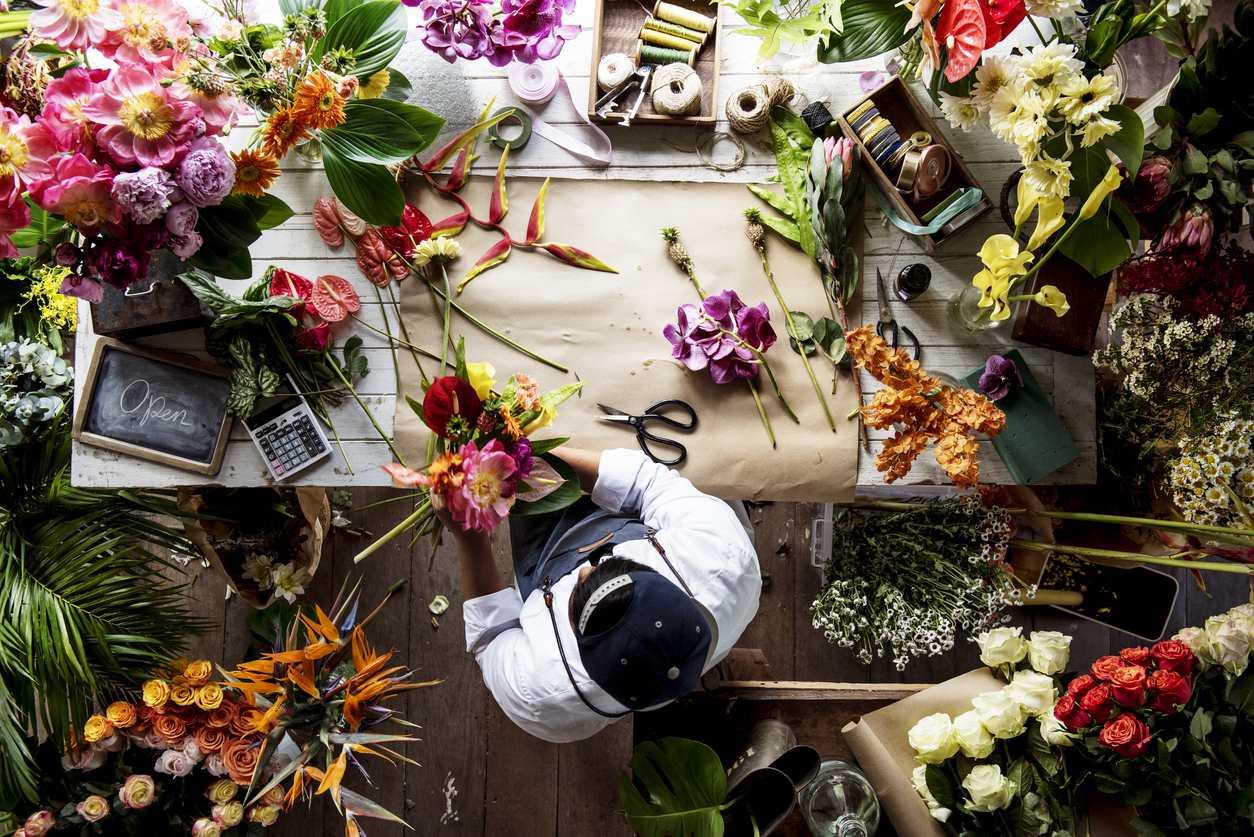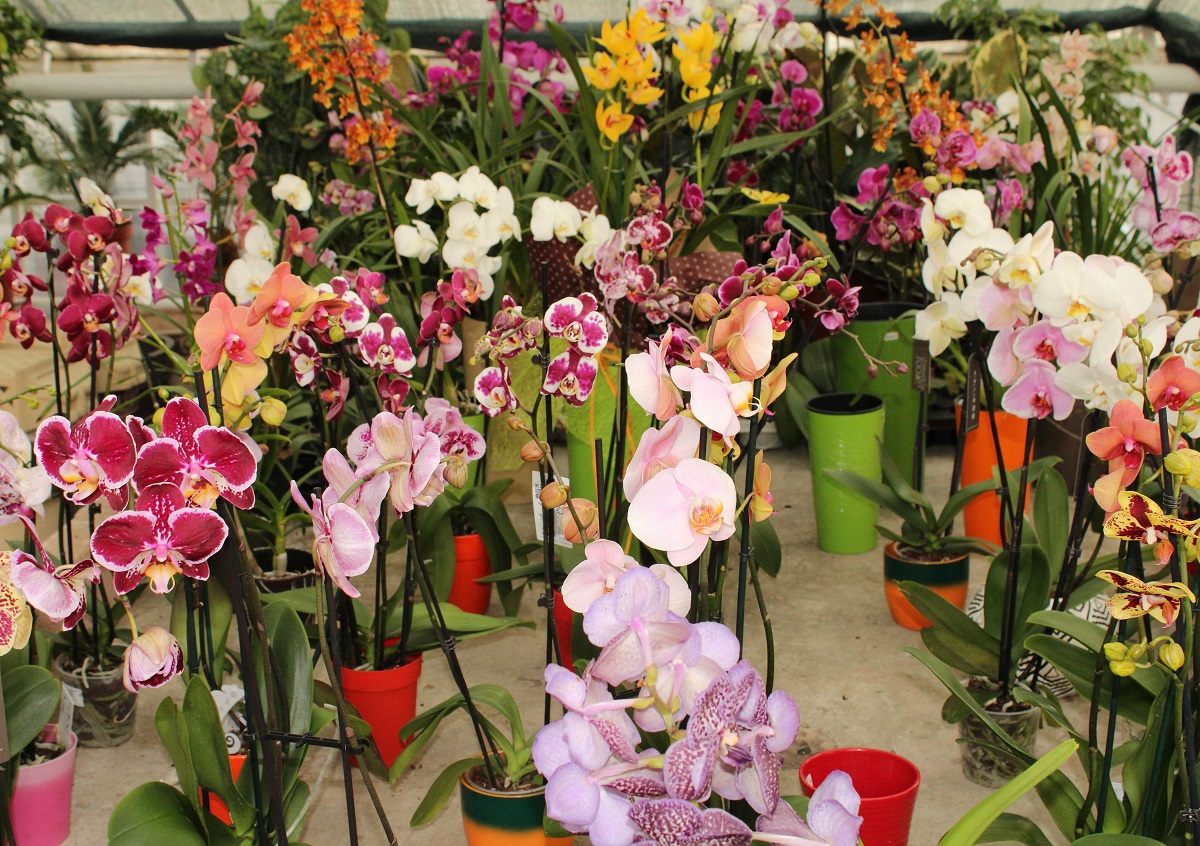Orchids are tropical flowering plants native to Southeast Asia, the Philippines, and Australia. The most prevalent type of orchid found at florist shops is called Phalaenopsis. These plants feature long, coarse roots, short, leafy stems, and long-lasting, very colourful, flat-petaled flowers arranged on a stem that often branches near the end.
In Canada, orchids are grown year-round in greenhouses that are built with the specific requirements for light, water, temperature, and space that these plants need. It can take as many as 18 months for an orchid plant to reach maturity and be ready to sell.
There are many steps to take over the course of the complete growing cycle. This begins by importing young plants (about 6 months old) from a producer.
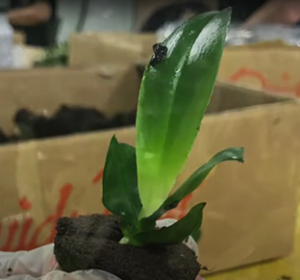
The plants are grown in individual pots with a medium such as moss or bark. They will need fertilizer and regular watering until they are big enough to move into larger containers.
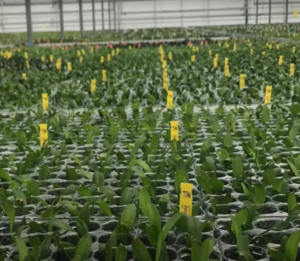
After several months, small shoots will begin to show. At this point, the plants are moved into larger pots as they wait for shoots to appear.
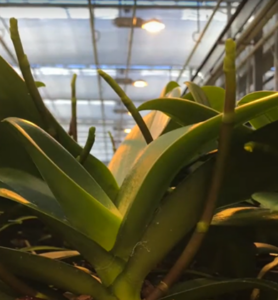
Then, the plants will grow for several more months before stems appear. Orchids like to grow in a humid environment, much like that of the countries of their origin.
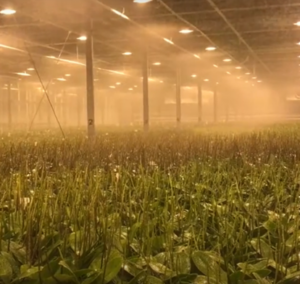
As the stems mature, flower buds will begin to form.
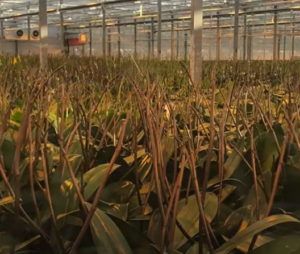
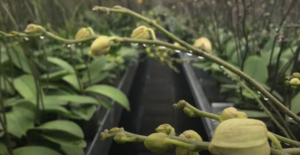
Once the buds start to bloom, the plants are ready for shipping.
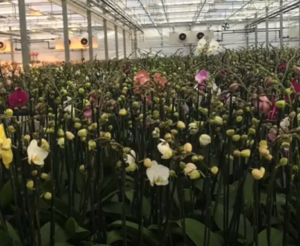
When blooming fully, the plants are carefully packed and shipped to florist shops.
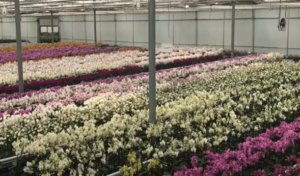
Florist shops carry these lovely plants every season, ready for sale as gifts to brighten up homes and bring smiles to those lucky enough to receive them.
Sustainable Greenhouse Management
In the operations of a greenhouse, many opportunities exist to make the practices as sustainable and environmentally safe as possible. Here are some possible areas and procedures to consider:
Water
- Rainwater can be collected, cleaned and used for irrigation.
- Irrigation water can be reused, allowing for the reuse of fertilizers.
Pest Control
- Plant-friendly biologicals can be used, instead of chemical treatments, to ensure that the plants are grown in a way that is friendly to the environment as well as to humans and pets.
Growing Medium
- Resources can be conserved by using a potting medium made of readily available pine bark rather than sphagnum moss, which is becoming scarce.
Earth-Friendly Materials
- The use of recycled multiple-use plastics and cardboard packaging is kinder to the environment than traditional materials.
